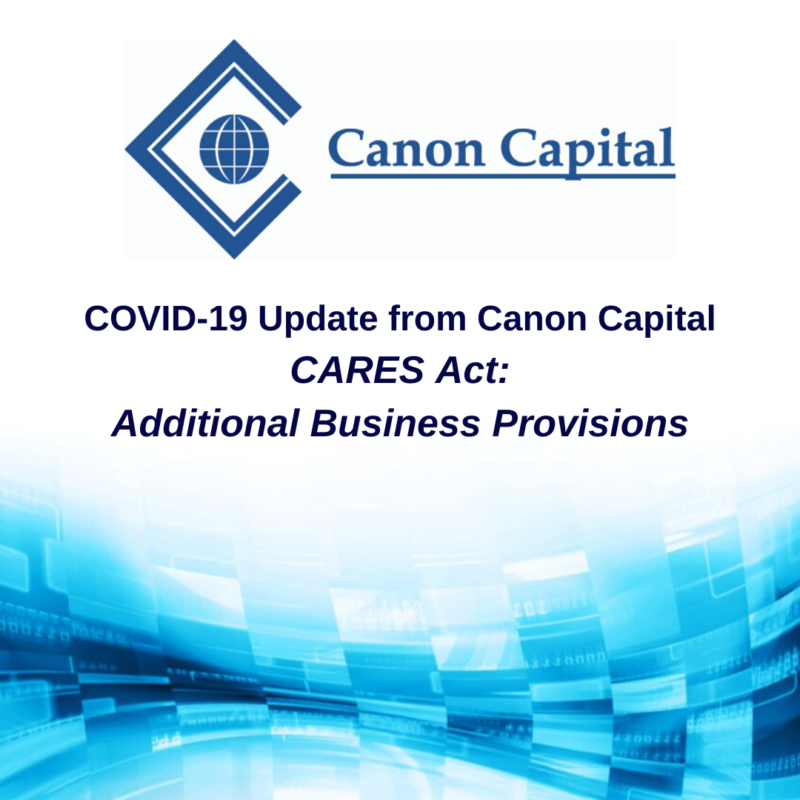By far, the biggest business provision in the Coronavirus Aid, Relief, and Economic Security (CARES) Act was the provision of the Paycheck Protection Program loans. However, there are many, many more powerful tax relief provisions that were included. Here’s a summary of some of them.
Employee Retention Credit for Employers Subject to Closure Due to COVID-19
Employers can receive a refundable quarterly payroll tax credit equal to 50% of qualified wages paid to an employee. The credit is available to employers, including non-profits, whose operations have been fully or partially suspended as a result of a government order limiting commerce, travel, or group meetings. Eligible employers must have an average number of full-time employees in 2019 of 100 or fewer and experienced over a 50% decrease in gross receipts for the same calendar quarter in the previous year for all wages to be eligible. Employers with over 100 average employees can only take wages paid to employees who have been furloughed or have reduced hours into account.
The eligibility of the credit must be coordinated with Small Business Interruption Loans under Sec. 1102, Paycheck Protection Program loans, Work Opportunity Credits, and required paid sick leave or required paid family leave under the Families First Coronavirus Act.
The credit applies to wages paid after March 12, 2020 and before January 1, 2021 and is capped at the first $10,000 of wages paid to each eligible employee.
Delay of Payment of Employer Payroll Taxes
Employers and self-employed taxpayers can delay payment of the employer portion of payroll taxes through the end of 2020. Fifty percent of any payroll taxes deferred under this provision must be paid by December 31, 2021, with the remaining portion paid by December 31, 2022.
This provision does not apply to any employer who had debt forgiveness under the Paycheck Protection Program Loan.
Modification of Business Losses
Certain taxpayers with losses arising in taxable years ending after December 31, 2017 are now allowed to carryback the losses to each of the five taxable years preceding the year of the loss. The CARES Act also removes the limitation that current year Net Operating Losses offset no more than 80% of the current year taxable income prior to such loss. Current year losses can now offset 100% current year income.
Depreciation Correction on Qualified Improvement Property
The Tax Cuts and Jobs Act (TCJA) of 2017 defined Qualified Improvement Property (QIP) as certain improvements made to an interior portion of a non-residential building if such improvement is placed in service after the building was first placed in service. The TCJA intended for QIPs to be depreciated over 15 years. As a result, these improvements would have been eligible for immediate expensing under code sec 168. However, this 15-year recovery period failed to be reflected in the statutory text of the TCJA. As a result, QIPs have been capitalized and depreciated over a 39-year life and, in turn, not eligible for immediate expensing.
The CARES act provides the technical correction to the TCJA and specifically designates QIPs as 15-year property and eligible for immediate expensing under sec 168.
Any QIP placed in service after December 31, 2017 is eligible for this treatment.
As a result, taxpayers with QIPs placed in service in 2018, or 2019 with a return already filed, should amend their return to reflect the new treatment.
Other Odds and Ends
For large taxpayers with over $26M in average annual gross receipts, the business interest deduction cap has been increased from 30% to 50% of adjusted taxable income for 2019 and 2020. There are special rules for partnerships and a taxpayers can elect out if they wish. Another election to figure the deduction limit in 2020 on 2019 income is also available.
Excise taxes have either been exempted or removed for taxpayers with certain distilled spirits or aviation fuels.
If you have questions about these updates, please contact us at 215-723-4881 or via email.

